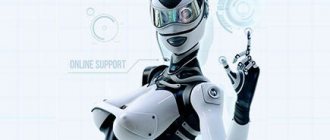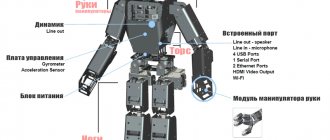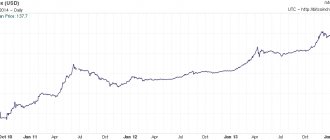The history of automated mechanisms goes back thousands of years, from robotic servants of the gods mentioned in Greek mythology to the complex Chinese astronomical water tower clocks of the 11th century. Even Leonardo da Vinci developed a number of automata, including self-propelled carts and robot knights. So when did automated machines become robots?
The modern era of robotics began during the Industrial Revolution, with the introduction of steam and electricity, paving the way for powered motors and machinery. The inventions and discoveries made by Thomas Edison and Nikola Tesla helped usher in a new era of robotics. In 1898, Tesla introduced his radio-controlled boat, boasting that he was the first in the future robot race. Many consider this event to be the birth date of robotics.
However, the word "robot" was not used until 1920, when Czech playwright Karel Capek wrote the science fiction play RUR, which depicts a revolt of robotic factory workers against their human owners. And in 1941, the equally famous science fiction writer Isaac Asimov coined the term “robotics”, mentioning it in the short story “Liar!”
Six months later, Asimov wrote the story “Round Dance,” in which he optimistically characterized robots as useful servants of humans. This story also marks the first mention of Asimov's "Three Laws of Robotics," which continue to influence literature, film, and science as research into artificial intelligence continues.
Key inventions of the 20th century, including the digital computer, the transistor, and the integrated circuit, led scientists to begin developing electronic, programmable brains for robots. Industrial robots are now a common sight in modern manufacturing. They are used to solve a wide variety of problems - from transporting materials to assembling parts.
The biomedical, manufacturing, transportation, space and defense industries are using robots much more frequently than before. Significant advances in software and artificial intelligence (AI) have led to the creation of robots that mimic the basic form and interactions of humans, such as Honda Corporation's bipedal "Acimo." The IBM Watson supercomputer, equipped with an advanced AI system, was originally developed to compete against humans on the American quiz show Jeopardy!, which it won, and then went into commercial use as a cancer diagnostician.
The four-legged robot "BigDog" from Boston Dynamics is designed to move over rough terrain and is capable of carrying heavy loads. Modern autopilot systems integrated into airplanes, self-driving cars, and even space rovers such as Curiosity, which roamed the surface of Mars, demonstrate how sophisticated programmable robots have become.
Robot "BigDog"
Robots are no longer associated with Greek myths or Hollywood blockbusters. Droids, drones and robots are now a widespread and important part of our society.
First medical robot
The first documented use of a medical robot dates back to 1984, when Arthrobot, developed in Vancouver by Geoff Auchinleck and Dr. James McEwen in collaboration with surgeon Brian Day, was used in orthopedic surgery.
The da Vinci robotic surgical complex allows you to perform the most complex operations in hospitals around the world.
“Arthrobot” is a small robot for performing hip arthroplasty (surgery to restore joint function). It was designed for precise drilling of hip joints, with the ability to be programmed to create cavities in specific positions and angles for subsequent implantation of prostheses.
Although small and relatively simple improvements and modifications to the original Arthrobot led to the use of robots in more complex surgical procedures, such as total knee replacement, such innovative solutions in the field of medical robotics continued until 1997, when medical robots have not become widespread.
Intuitive Surgical Inc's da Vinci system became the first surgical robot to receive approval from the US Food and Drug Administration. The da Vinci robot is a full-fledged surgical complex with a set of instruments, cameras, sensors and other accessories.
Did you know? In 1998, the world's first coronary artery bypass surgery was performed in Leipzig using the da Vinci surgical complex.
The concept of robotics and its laws
In 1941, Isaac Asimov's famous laws of robotics were formulated in the story "Liar", which are designed to regulate the behavior of these machines.
- A robot cannot cause damage to a person or, through inaction, allow this damage to be caused.
- A robot must obey a person as long as it does not contradict the first law.
- A robot can defend itself if this does not contradict the first two laws.
Subsequently, based on these laws, Asimov himself and other authors created a huge layer of works devoted to the relationship between people and machines.
Azimov introduced the very concept of “robotics”. The word, once used in a science fiction story, is now the name of a serious scientific field engaged in the development and construction of various mechanisms, process automation, etc.
The first military robot
Invented in 1898 by Nikola Tesla, a radio-controlled boat intended for military use and proposed by the US and UK was never developed.
Tank T-26, on the basis of which the TT-26 teletank was created
In World War II, military robots were first used in the form of remotely controlled unmanned vehicles - the German Goliath self-propelled mine and the Soviet Teletank tank. The teletanks were created on the basis of the T-26 light tanks, equipped with hydraulics and remote control equipment. Teletanks carried a machine gun, a flamethrower, and smoke and chemical weapons equipment, meaning they were a formidable weapon on the battlefield. The German Goliaths, on the other hand, were designed as mobile landmines that could be remotely driven toward enemy vehicles or infantry and detonated.
Although both the Goliath and Teletank were developed at the same time, Soviet unmanned tanks came into use first and were used during the Soviet-Finnish War (1939–1940) in Eastern Finland.
Mechanical musicians and walking locomotives
During the 16th century, many devices were created in Europe, mainly using winding (clock) mechanisms. For example, in Germany an artificial fly and an eagle were made that could fly, and in Italy a robotic woman played the lute.
During the 17th century, Europeans developed and improved the first mechanical "calculators". At first they can only add and subtract, but by the end of the century they are already capable of division and multiplication.
This moment can be considered a turning point in the history of robotics, since two branches of knowledge begin to develop in parallel, which in the future will be used to create modern robots:
- development of machines that imitate and replace humans and their actions;
- creation of devices designed for storing and processing information.
At the same time, mechanical humanoid devices continue to be created that are capable of playing musical instruments, writing and drawing.
The onset of the 19th century was marked by the beginning of people's “friendship” with electricity. It begins to spread rapidly and penetrate many areas of human activity. At the same time, various mechanical computing and analytical machines were being improved, and the telephone and telegraph were invented.
There are stories of various humanoid machines allegedly invented and used in the United States during the 19th century:
- in 1865, designer Johnny Brainard created the so-called steam man, who was harnessed to a cart instead of a horse. It was, in fact, a steam locomotive that looked like a person (only much larger in size). He had to be constantly “stoked”, and he was controlled like a horse by the reins. It was claimed that he could “walk” at speeds of up to 50 km/h.
- After some time, Frank Reed is already testing the “electric man”, but little is known about this invention.
- In 1893, Archie Campion introduced a model of a steam-powered artificial soldier called the Boilerplate, which was allegedly used many times in practice, i.e., in battle.
All this information is interesting, but raises some doubts, since, despite the seemingly outstanding characteristics, these products never went into mass production, unlike steam locomotives, steamships, and so on. Most likely, they existed only in the form of prototypes and never found their application, being, in fact, toys for adults.
The first humanoid robot
Humanoid robots, often called androids in science fiction, are designed with the human form in mind. Simple humanoid automatons have been created from time immemorial and gradually improved to more accurately imitate the appearance and behavior of humans. One of the first documented examples is Leonardo da Vinci's mechanical knight.
Leonardo's Robot Knight was controlled by a combination of pulleys and cables that allowed him to stand, sit, and move his arms independently. He had a human form and even wore armor like a knight. Although da Vinci's mechanism is primitive by today's standards, lacking artificial intelligence and remote control, it was ahead of its time in the 15th century.
Da Vinci used pulleys, weights and gears in many of his inventions, including the self-propelled cart, which many consider the first robot. He later went on to design a robot knight for a royal pageant in Milan that took place in the late 1490s.
Leonardo da Vinci's robot knight drawings are still used by modern roboticists and even contribute to the development of robots for NASA.
Machines of the ancient world
The history of robotics goes back to ancient times. Some kind of robots were invented in Ancient Egypt more than four thousand years ago, when priests hid inside statues of gods and talked to people from there. At the same time, the statues' arms and heads moved.
If you give some free rein to your imagination, you can find references to robots, for example, in the myths of Ancient Greece. Homer also mentions mechanical servants who were created for himself by the ancient Greek god Hephaestus, the giant Talos, who he created from bronze to protect Crete from the enemy. Plato tells the story of the scientist Archytas of Tarentum, who made an artificial pigeon capable of flying.
In the 3rd century BC, Archimedes allegedly made an apparatus extremely reminiscent of a modern planetarium: a transparent ball driven by water, which displayed the movement of all celestial bodies known at that time.
In the Middle Ages, people had already begun to create real machines that could do many interesting things. Attempts to create the first humanoid machines also date back to the Middle Ages.
Albert the Great, a famous alchemist of the 13th century, created an android that served as a gatekeeper, opened the door when knocked and bowed to guests (an android is a robot that copies a person in appearance and behavior). He also designed a mechanism capable of speaking with a human voice, the so-called talking head.
The first robotic transport
After the 1964 World's Fair, science fiction writer Isaac Asimov predicted in his notes that 50 years later cars would be controlled by "robotic brains." For many years after that, autonomous vehicles existed only as theoretical concepts and research projects.
Mercedes-Benz has been researching autonomous vehicles since the 1980s.
Real progress began in 1986, when the PROMETHEUS project was launched at the University of Munich under the direction of the European Research Coordination Agency (EUREKA, European Research Coordination Agency). For almost a decade, a team of developers has been working on a self-driving car project called VITA, equipped with sensors that allow the vehicle to adjust its speed when danger is detected.
In 1994, the VITA made a 1,000-kilometer trip along the Paris highway in heavy traffic, reaching a speed of 128 kilometers per hour. Later, certain aspects of VITA were taken into account when designing future Mercedes-Benz vehicles.
robottardyn Zhiktelui
Burnesh adisterin zhikteu. Oryndalatyn zhumystyn sipatyna karai avtomattar bolinedi onerkәsіptik, kurylys, auyl sharuashylygy, tasymaldau, turmystyk, askeri, kuzet, medical science zhane zertteu.
types Boyynsha baskaru olar bolіnedі baskarylatiyn operatordyn komegimen, semi-autonomous women tolygymen autonomy.
Machinery type: “Balalar radiomen Baskarylatyn avtomobilchik nemese tikushak”. Semi-autonomous orndai aladas, oz betimen operatiyalar, birak sheshushi kezenderi, sol aralasuyn kazhet adam. Tolygymen autonomy robottar barlyk spectrіn operationlardy oz betinshe oryndaydy (thoughts, manipulatorlar automatty kurastyru zhelіlerіnіn).
money Boyynsha ұtқырлѓғын tөmendeгідідій сініптур podtar: landline or mobile phone. Stationarlyk “bul en manipulatorlar, olar barlygyn korip uyrenіp, mysaly, car zauyttarynda. Mobiles are mostly walking, and don't make any changes.
First space robot
We can say that Sputnik 1, launched by the USSR in 1957, became the first robot in space. And Robonaut, developed in collaboration between General Motors and NASA, has been hailed as the first humanoid robot in space and the first robot to operate human tools in space. He currently works on the International Space Station (ISS).
The Robonaut 2 project aims to create a humanoid machine capable of working with astronauts to perform difficult and dangerous maintenance and repair tasks in outer space.
R1, the first iteration of Robonaut, was a prototype designed to explore how humanoid robots could assist astronauts in outer space. Its successor "R2" is equipped with a full-fledged robotic exoskeleton, an advanced technical vision system, image recognition software, sensors and control algorithms, as well as robotic arms. He helps astronauts in their work to save their energy. In addition, Robonaut is trained in Houston to perform medical procedures, including the use of syringes and ultrasound scans.
"Robonaut 2" is covered with a soft material and is programmed to stop if it touches a person to avoid injury.
What modern devices can do
Thanks to the advent of modern technologies, the prospects for the development of robotics are expanding. Robotic mechanisms are used in various areas of life:
- Medical microrobots are capable of examining the human body.
- Android robot Asimo helps people with disabilities.
- The robot fish is used by biologists to monitor representatives of the underwater world.
- Household robotic vacuum cleaners, pool and window cleaners help housewives.
- The sapper robot performs tasks related to searching and neutralizing mines and shells.
Humanoid Sophia is the world's first android with artificial intelligence to officially receive citizenship in Saudi Arabia. The anthropomorphic robot-cosmonaut Fedor will go to the Mir ISS as part of an international crew in July 2022.
The development of robotics is proceeding in several directions related to biotechnology and cybernetics. The developers briefly formulated the main goal: the progress of artificial intelligence, its self-development and the search for optimal solutions to assigned problems.
Scientists’ plans for the next 10 years include developing projects and organizing the production of robotic quadcopters, surgeons, caregivers, and farmers.
First industrial robot
The first industrial robot was introduced on a production line at a General Motors plant in 1961. Unimate was a powerful robotic arm for installing cast metal parts and welded components onto a car chassis. It was the first robotic arm and helped speed up production lines in factories around the world.
The initial cost of the Unimate manipulator was $25,000. The robot had six programmable axes of movement, and the design allowed it to work with heavy objects at high speed. The 1.8-tonne arm proved to be extremely versatile and soon became one of the most popular industrial robots in the world.
Unimate became popular outside of industry, appearing on The Tonight Show, where he poured beer and even conducted an orchestra.
George Devol, who pioneered the development of an industrial programmable robot in 1954, founded the world's first robot manufacturing company, Unimation. Robots have become commonplace on modern assembly lines, as their ability to perform repetitive tasks at high speed makes them ideal production tools.
Where can machines replace people?
The answer to the question of whether a person or a robot should do a particular job lies in the differences between people and machines. At the moment, even the most advanced machines operate according to certain algorithms pre-programmed (albeit sometimes very complex ones). They have no free will, freedom of choice, desires, impulses, nothing that defines the creative component of a person.
A robot can perform work of great complexity and precision, and will be able to perform this work in conditions in which a person would not survive for even an hour. But he will not be able to write a book or a script for a new film, or create a painting, unless this was previously implanted in his memory by a person.
Therefore, creative professions, where non-standardism and unconventional thinking are important, certainly remain with people. A robot can be a welder, loader, painter, even an astronaut, but it cannot become (at least at the current stage of development) a writer, poet or artist.
First unmanned robot
Drones, or unmanned aerial vehicles (UAVs), have been used for hundreds of years. The first documented use dates back to 1849, when the Austrian army launched balloons equipped with bombs towards besieged Venice. Military research in the 20th century led to a number of technological innovations, including the global positioning system (GPS) and the Internet.
This led to the creation of the first fully autonomous unmanned aerial vehicle in 1973. The Israeli drone Tadiran Mastiff was equipped with a data transmission system that allows high-quality video recording of the flight location in automatic mode and in real time and broadcasting it to the operator. These UAVs were pre-programmed with a flight path and were widely used by the Israel Defense Forces.
Modern military drones such as the Predator and Taranis play a key role on the battlefield.
Share link
Orystar automatic machines in Garyshkerlikke
Resmi bastaluy robotics Reseyde ornalaskan 1971 zhildan. Dal sol kezde ol resmi turde tanyldy gylymdy KSRO. Degenmen uaqyt avtomattar reseilik ondiristin kazіrdіn ozіnde bar yntamen furrowed olke garysh.
1957 zhyly shykty orbital alemdegi en algašky Zherdin zhasandy serіgi. 1966 there was a station “Luna-9” dept. Jerge radio signal betinen Aydy, al devices “Venus-3” satti zhetip, galamshardyn ornatty, onda zhalausha KSRO.
Barlygy tort zhyldan kein iske kosyldy, so lunar stations men ekі orndap, oz missionson satti өtti. The devices “Lunokhod-1”, the station “Luna-17”, the station “Luna-17”, the most valuable equipment.
1973 zhyly ber stations os seriesy christmas dastүrde otkіzіp, ágá tagy bіr lunar rover, sonday-ak oryndap ozіnіn mіndetі ote zhaksy.
Onda machinelar mumkin degen.
Bar, adam nemese robot oryndauga tiis sol nemese ozge zhumysty, munyn arasyndagy ayirmashylyktar adamdar men machine. Wasps satte tipti en tamasha biri machinelar zhumys isteidi, belgili bir, aldyn-ala kepilge salyngan bagdarlamasyn algoritmderine (sabiler keide ote kurdeli). Olarda eshkanday erik bostandygyn, bass bostandygyn tandau, telek, karkynga, eshten zhok ekenin anaktaydy shygharmashylyk kuraytyn.
Robot and orndai alada zhumyska ulken qiyndyktar zhane daldigin alada wasps zhumysty orndauy mundai zhagdaylarda, onda adam omir surdi zhane sagat. Bіrak ol kitap zhazyp, nemese script zhan film zhasauga, korkem canvas, eger bul tek aldyn ala zhetіp otyr, onyyn zhady adam.
Sondyktan, mamandyk, shygarmashylyk, manyzdy non-standard, unconventional oylau, arine, qalady adamdar. Robot bolu mүmkіn, dәnekerleushi, loader, cheese laushy, tipti garyshker, birak ol bola alada (kem degende, damudyn kazirgi kezeninde) zhazushy, akyn nemese suretshi.
Athenian self-propelled snail
Almost thirty years before the robotic statue of Nysa, the Greek historian Polybius (c. 200 - c. 120 BC) informed his readers of another ceremonial procession dedicated to Dionysus, but this time taking place in Athens. In 308 BC. e. The absolute ruler (epimelet) of Athens, Demetrius of Phalerus, who was known not only as a talented writer and philosopher, but also distinguished by a penchant for excesses and all sorts of extravagances, ordered the construction of a self-propelled snail. A snail? Such stupidity (at least this is how a modern reader might view the idea of creating some strange snail) is characteristic of all tyrants of all times. But in the story with Demetrius, not everything is so simple.
Why create a large, moving replica of the humble snail? The fact that the snail, without a doubt, was not a tiny model (although Polybius does not mention its size) is usually not in doubt. It can be noted that the festival of Dionysius was held in winter, when the rains began and snails appeared in large numbers on the streets of Athens. The oversized Demetrius snail looked so lifelike that it even left a "spit", or trail of mucus, as it slowly moved along the route. This special effect could easily be achieved by using a reservoir filled with, for example, olive oil released from a hidden pipe in the snail's tail.
A hail-breaking machine with a squirrel wheel and a similar design hidden inside Demetrius's snail
An important detail: following the snail in the procession was a group of donkeys. The combination of snails and donkeys was part of a malicious joke. Snails were slow, and since they carried their homes on their backs, they symbolized impoverishment. Donkeys were associated with slow-witted, lazy slaves who only worked when beaten. The purpose of Demetrius's performance was to mock the slowness and stupidity of the Athenians. The snail itself seemed harmless, but it was a dramatic and public way to humiliate the Athenians, whose democracy had been crushed by the Macedonians. However, the symbolic meaning of the snail remains not fully clarified, because we know about the procession from a short fragment dropped by Polybius.
What material the snail was made of and its internal structure are also not described in Polybius’ story. But the phrase “spontaneously” suggests some kind of self-propelled mechanism. In 1937, the German philologist Albert Rehm proposed that inside the snail's shell, there was a person walking on a treadmill, and another was behind the "wheel" to control the movement of a model of a large mollusk. Treadmills have existed since ancient times; Thus, the massive, mobile siege engine "Helepolis" was built in 323 BC. e. Posidonius for Alexander the Great during the siege of Tire. This hail-breaking machine was moved by a treadmill, as a Roman relief from the 1st century AD shows. e. illustrating a huge construction crane driven by many people, like squirrels in a wheel, inside a large treadmill. Rehm's theory today is still debated and not fully accepted by many researchers.
It is interesting that not even a year had passed after the procession organized by Demetrius of Phalerus before he was expelled from Athens. The overthrown tyrant found refuge with Cassander in Thebes, and after the death of his friend he went to the Ptolemaic court. It was in Egypt that he later took part in the cultural projects of Ptolemy I Soter and Ptolemy II Philadelphus, such as the Library of Alexandria. And perhaps it is not at all accidental that in the grandiose Egyptian procession of 279/278 BC. e. automatic devices are appearing again.
Obstacles
Despite all the usefulness of the technology, robots are not yet widely used, as is often shown to us in many science fiction films.
This is due to a number of factors. Firstly, our infrastructure is simply not ready for this: roads, streets, buildings and our homes. Robots perceive the world differently and are so far unable to even distinguish a chair from a table, let alone the constantly changing conditions of our lives. Secondly, the legal system of states is not ready: the use of robots requires appropriate laws so that they “peacefully” coexist with us. After all, if not the robots themselves, then someone else must be held accountable for their actions.
Thirdly, some researchers argue that we need to be wary of these mechanical workers, since with the further active development of artificial intelligence, they can literally enslave us. These concerns have held back too much the research and expansion of robotics.
Of course, there is no denying that there are a lot of global risks that can arise when using superhuman intelligence that is not programmed for unconditional loyalty to humans. But the future is still in our hands, and we have the power to change it, especially since robot programming is now becoming more open and accessible to the public. You just need to learn how to use these opportunities correctly.











